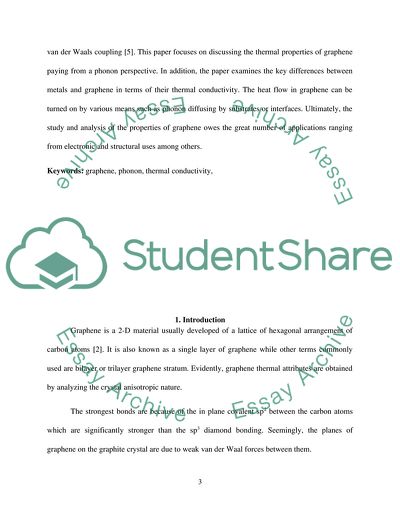Cite this document
(Understanding Graphenes Thermal Properties Case Study Example | Topics and Well Written Essays - 2750 words, n.d.)
Understanding Graphenes Thermal Properties Case Study Example | Topics and Well Written Essays - 2750 words. https://studentshare.org/physics/1850248-understanding-graphenes-thermal-properties-a-phonon-prospective
Understanding Graphenes Thermal Properties Case Study Example | Topics and Well Written Essays - 2750 words. https://studentshare.org/physics/1850248-understanding-graphenes-thermal-properties-a-phonon-prospective
(Understanding Graphenes Thermal Properties Case Study Example | Topics and Well Written Essays - 2750 Words)
Understanding Graphenes Thermal Properties Case Study Example | Topics and Well Written Essays - 2750 Words. https://studentshare.org/physics/1850248-understanding-graphenes-thermal-properties-a-phonon-prospective.
Understanding Graphenes Thermal Properties Case Study Example | Topics and Well Written Essays - 2750 Words. https://studentshare.org/physics/1850248-understanding-graphenes-thermal-properties-a-phonon-prospective.
“Understanding Graphenes Thermal Properties Case Study Example | Topics and Well Written Essays - 2750 Words”. https://studentshare.org/physics/1850248-understanding-graphenes-thermal-properties-a-phonon-prospective.


